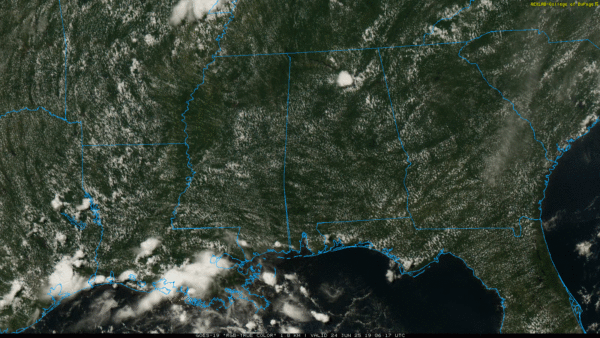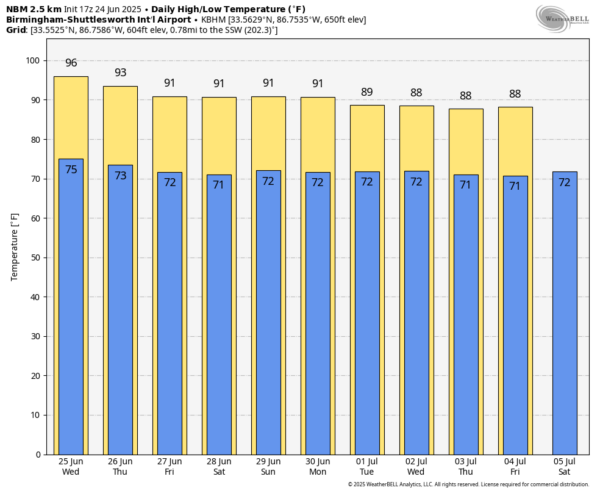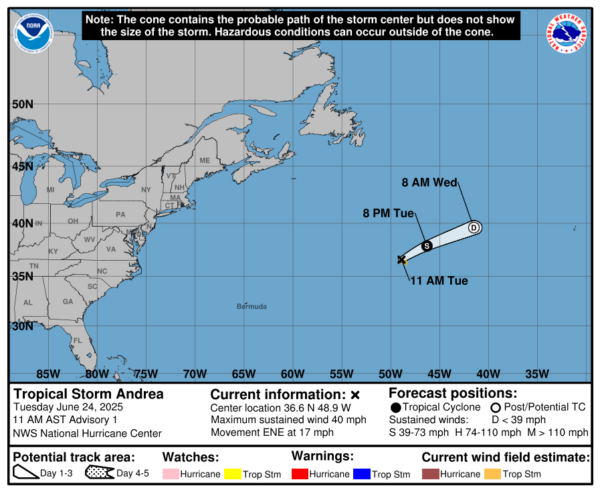Hot, Humid Days; A Few Afternoon Storms
RADAR CHECK: Showers and storms are few and far between so far across Alabama this afternoon. Temperatures are in the low to mid 90s with a partly to mostly sunny sky. Isolated showers end early tonight after sunset.
Hot, humid summer weather will continue to headline the forecast for Alabama through mid-week. Expect a high tomorrow in the 93-98 degree range; a heat advisory is in effect for the northern 2/3 of the state with potential heat index values touching 105 at times. Showers and storms will form during the peak of the heat, but they will be widely scattered and not everyone will see a cooling shower.
We SPC has much of Alabama in a severe weather risk both tomorrow and Thursday; where afternoon storms do form they will be heavy with potential for strong, gusty winds and small hail. The chance of any one spot seeing an afternoon storm today is 20-30 percent, and 30-40 percent tomorrow and Thursday. Most of them will come from around 1:00 until 9:00 p.m.
FRIDAY AND THE WEEKEND: The upper ridge over the eastern half of the nation will weaken, meaning slowly falling heat levels and increasing coverage of afternoon showers and thunderstorms. Expect a mix of sun and clouds daily with highs in the 87-91 degree range for most communities. The chance of any one spot getting wet each afternoon is 55-65 percent.
NEXT WEEK: Not much change. Humid days, highs between 87 and 91 degrees, and scattered showers and thunderstorms during the afternoon and evening hours. Pretty much what we expect around here in late June and early July… See the video briefing for maps, graphics, and more details.
TROPICS: NHC has designated the disturbance in the middle of the Atlantic Tropical Storm Andrea. It is a junk, short-lived system that will dissipate soon far from land. Winds are 40 mph this afternoon based on satellite estimates. The rest of the Atlantic basin is very quiet.
ON THIS DATE IN 1975: An Eastern Airlines Boeing 727 crashed at JFK airport in New York City. 113 of the 124 people on board the aircraft died. Researcher Theodore Fujita studied the incident and discovered that a microburst caused the crash. His research led to improved air safety. The tower never experienced the microburst, which was held back by a sea-breeze front. The plane crashed 2,400 feet short of the runway.
Look for the next video briefing here by 6:00 a.m. tomorrow…
Category: Alabama's Weather, ALL POSTS, Weather Xtreme Videos


















